Whether you are completely new to the sport of Volleyball or even a seasoned pro, the likelihood is you would have some volleyball players with tape on their fingers, hands and even wrists.
Now if you are lucky enough to have never needed to tape these areas you may be wondering.
Why do Volleyball players tape their fingers?

Well there are actually a variety of reasons as to why players tape their fingers, hands and wrists.
In short though, players tape their fingers mainly for support of weak joints, previous injuries or dry and cracked skin.
I will go into much more detail into what these injuries are and how exactly you should tape you these injuries for maximum support.
As I said there are a variety of reasons as to why players wear tape, however, with that being said I have also heard some really interesting theories as to why players wear tape which I hope at the very least will give you a good laugh.
Although on that note, I would like to point out that where injuries are picked up you should always consult your doctor, coach or medical physician.
So as I stated earlier the most common reason why volleyball players tape their fingers, hands and even wrists is normally to protect or offer support to a problem area.
Let’s take a look into what some of these reasons are and how exactly you should go about taping the area to best support it.
Table of Contents
Using Tape to Protect a Sprained Finger
One of the most common injuries in Volleyball is a sprained finger.
This is due to the nature of the sport and the common movements/ actions that are performed in volleyball such as blocking, mishitting the ball or even receiving hard driven balls over hand.
Each one of these actions and many more can lead to sprained fingers.
Just to clarify a sprained finger is when the ligament that connects the bones to the joints in the finger become damaged.
A sprained finger will often lead to swelling, bruising and a large amount of discomfort and pain.
Ideally if a sprained finger occurs the injury should be given time to naturally heal and recover.
However, maybe you have that really important game coming up that you just can’t miss then you may want to look to tape to offer support and protect the area to allow you to play the game relatively pain free and avoid doing further damage.
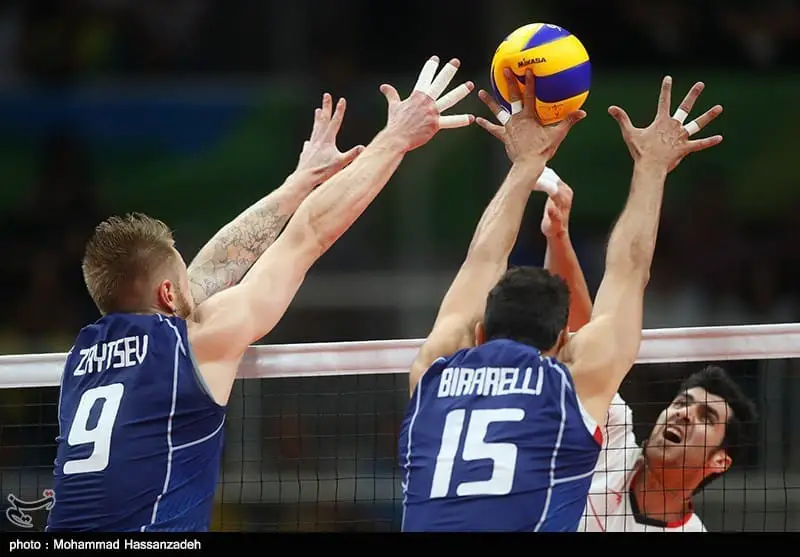
How to Tape a Sprained Finger
- Place your hand on a flat surface with your fingers gently spread, the more room you can create between the fingers the easier it will be to tape the problem one. However ensure you are not spreading them to a point of discomfort.
- Once the fingers are spread I would suggest wrapping a small strip of padded gauze around the joint and base of finger where the ligament is damaged, this will offer better protection and support.
- Once the gauze is situated take some elasticated athletic tape or medical grade tape and tightly wrap the tape around the gauze 3-4 times.
- You want to ensure the tape is wrapped tightly enough that it adds a good level of compression as this will help reduce swelling and discomfort.
However, with that being said ensure the tape is loose enough that it will not reduce/ restrict blood flow as this can lead to some pretty nasty problems.
Using Tape To Protect Fingers With Weakened Joints
If you have ever suffered a previous injury that may have weakened a joint in the finger you may want to limit the amount of bend your fingers will undergo to ensure the weakened joint does not become damaged again.
Having a weakened joint taped up and supported makes you as a player much more confident when playing, having to worry constantly if you are going to injure your finger again can really play havoc on your mind.
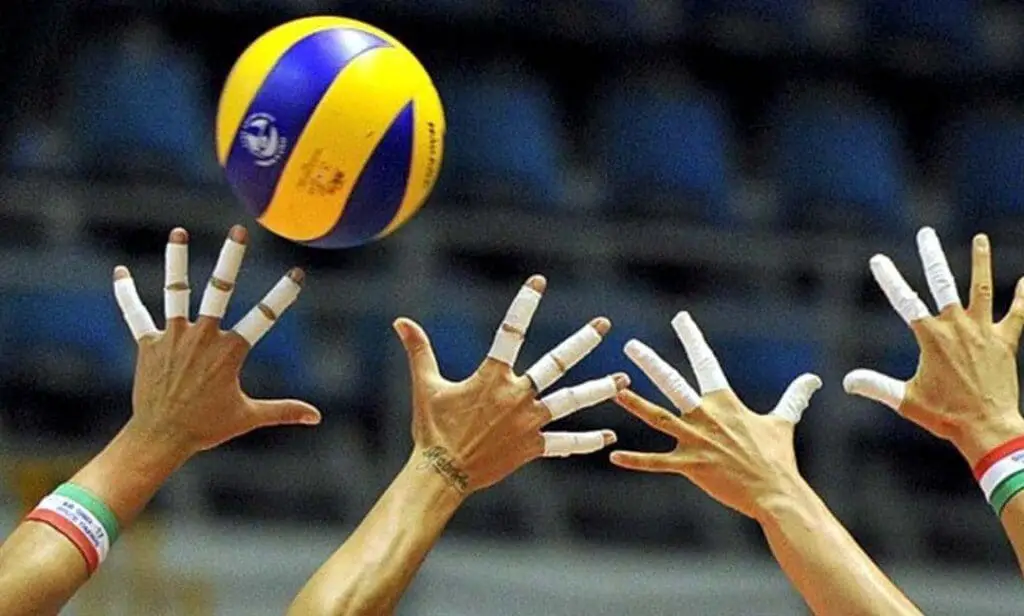
How to Tape Fingers To Prevent Bending
- Place your hand onto a flat surface and spread the fingers as wide as you can whilst avoiding discomfort.
- Take elasticated athletic tape or medical grade tape and place the tape on the side of your problemed finger just about the middle joint in the finger.
- Do one complete wrap of the tape directly above the middle joint until the tape reaches you starting point
- Once complete take the tape diagonally across the joint to just below the middle joint.
- Again wrap the tape one complete loop around the finger.
- Now take the tape diagonally back up to the starting loop, this diagonal should wrap the opposite side and opposite direction to the first diagonal. For example if the first diagonal was across the underside of the joint, the 2nd diagonal should go across the top of the joint.
- If done correctly the finger should be very well supported and drastically restrict the movement/ bend in the finger.
Using Tape For Dry & Cracked Fingers
Now I must admit when I first heard this was a reason why players may use tape it did come as a surprise to me.
I remember turning up to my normal training and noticing one of my teammates had taped every finger on his hitting hand.
Naturally I was curious at what injury he had sustained that needed every finger taped.
It was then I learnt that this is actually a common problem amongst players but luckily is something I have never experienced.
Through thousands of reps hitting volleyball it is quite possible and as it turns out is quite common for players to experience dry and cracking skin.
From a logical scientific standpoint it makes sense as to why this would occur.
Everytime we generate topspin when spiking we have to physically create friction between our hand/ fingers and the ball to ensure it generates the spin.
As we create this friction it stretches our skin slightly.
If you need proof of this place your finger tips on a desk next to you and just push you hand forward. You will feel the skin on your fingertips get much tighter as it stretches.
This is essentially the same thing that happens when we generate topspin on a volleyball.
Now I know you may be wondering how exactly this leads to dry and cracking skin.
This is certainly more of a problem in colder climates than hotter climates as colder environments draw more moisture from the skin than warmer environments.
This is the reason that many of us suffer more from dry chapped lips in the winter months.
With this moisture being drawn out the skin it quickly dries the skin out on the hands and fingertips. When there is less moisture the elasticity of the skin drastically reduces so when this stretching occurs it causes the dry skin to crack and split which can be very sore.
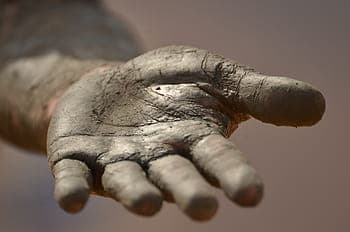
How To Tape Fingers With Dry and Cracking Skin
There are actually a few different ways in which you can tape these areas and depending on where exactly the skin is splitting and cracking will drastically change how you would approach this.
From my experience of seeing people who suffer from this the most common area is the end of the fingertips, with this in mind I will base my taping guide on this area.
- Take the tape and hold it against your finger, measure the length of tape required depending on how far down your finger the cracking and splitting occurs. Once you are happy with how far down your finger it goes cut a length of tape double this length (I will explain why in a second).
- Once you have the tape cut at double the required length, begin applying the tape starting at the base of the dry/ cracked skin, taking the tape towards the fingertip.
- Continue the tape over the top of the fingertip and continue down the back of the finger.
- You ideally want the tape to finish the same distance down the finger on each side.
- Once the tape is stuck down, take another section of tape and wrap it round the finger covering both ends of the first section of tape, this should help the tape remain stuck in place and not allow it to lift up or peel off.
Using Tape To Protect Nails and Fingertips
This is actually something I suffered from recently myself.
Now I am not someone who has particularly long nails however, when playing the other day I miss judged the set and ended up contact the ball rather late, this meant as I went to generate topspin on the ball I ended up catching my ends of my fingers on the ball and ultimately caught my nail on the ball.
This caused my nail to bend and break slightly, now the broken/ bent nail did not bother me in the slightest however the break in the nail dug into my nail plate causing it to break the skin slightly and become very bruised.
In fact you can still see the bruise under the nail that has started to grow out.
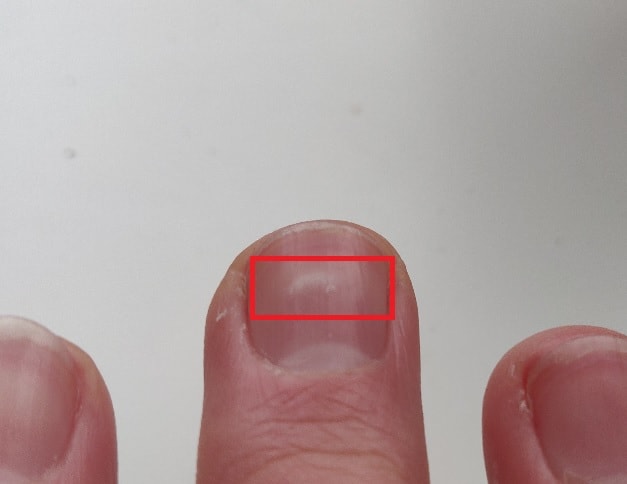
The problem was not major by any means however for some time afterwards everytime I hit the ball the finger felt very bruised.
Luckily there is actually a taping technique we can use to help protect/ support this area.
We can also use this method as a preventative measure if this is a regular occurrence for you.
How To Tape The Nail and Fingertips
If you read the above method on how to tape your fingers for dry and cracked skin this will look similar as it is almost exactly the same method.
- Take your hand and place it on a flat surface with your fingers spread.
- Take the tape and measure out the distance from the top joint of the finger to the finger tape and cut a length of tape that is double that measurement.
- Place the start of the tape on the back of the finger starting at this top joint.
- Take the tape vertically over the fingertip and down on to the inside of the finger.
- Continue the tape down to the top joint on the inside of the finger so that the tape goes up and over the fingertip and nail ensuring it covers the nail.
- Once complete take another section of tape and wrap it horizontally round the finger ensuring it covers both ends of the first piece of tape to prevent the ends peeling up.
Benefits of Taping Fingers For Volleyball
From the above you can see there are a variety of reasons as to why players tape their fingers and there are a few different methods in which the fingers should be taped to best support or protect them.
Taping fingers can be used as a preventative method, form of protection or to assist in recovery of injuries or weakened areas.
With that being said I would like to add that as a general rule of thumb I wouldn’t suggest using things such as tape or any medical braces and supports too often, the reason for this is if you relay on them too heavily the body can become accustomed to the extra support and cause the ligaments to tendons to become weaker as they don’t need to take as much strain.
Finger Taping Myths
Now in my years of playing and individual research I have found some brilliant answers as to why other people think volleyball players wear tape.
Some of them to be honest sound like logical conclusions whereas some of them are just too far fetched.
However, with that being said I felt I should share them below so you can either get a laugh or purely just to inform and advise you on reasons why players don’t wear tape.
Wearing Tape Makes You Hit the Ball Harder
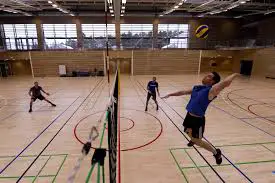
If you are a seasoned volleyball player then you will instantly see why this is rather silly.
Your fingertips in the grand scheme of things has very little effect on how hard someone can hit a ball.
Spiking a ball with great power is very much down to technique, arm swing speed and shoulder power.
Never have I heard someone say the reason this person spikes hard is due to their unique finger tips.
So with that in mind, taping your fingers will certainly not make you spike or hit the ball faster or harder.
With that being said, if you are suffering from any of the injuries mentioned above, taping them up may be the only way in which you spike the ball with your normal power or strength without feeling great discomfort or pain.
Wearing Tape Allows You To Create More Topspin

Now I will concede I do see why this myth is commonly believed and stated because when you think about it logically it does stack up and to be honest when I have put tape on I do feel like I can contact the ball crisper.
However as anyone can attest to who has worn athletic tape or medical tape, it picks up dust and becomes worn very quickly and once this has happened the remaining surface will actually be smoother than your actual fingers.
This means although maybe the first spike may be crisper the subsequent hits you will actually be at a disadvantage.
However, again if you are playing with an injury applying tape may be the only option to allow you to spike the ball with topspin without being in pain.
Although I do think each subsequent hit will be more difficult to generate topspin as the friction drastically decreases.
White Tape Distracts the Opposition
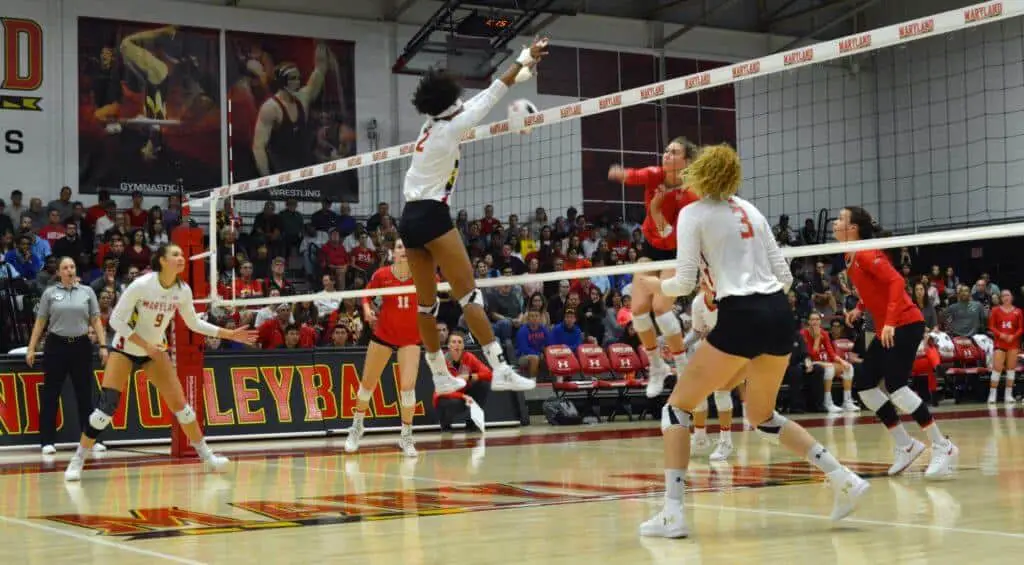
I must admit this is my absolute favourite myth.
In volleyball there is so much happening and so many stimuli that can honestly say I couldn’t pinpoint a single player on the other team who was wearing tape if you were to ask me at the end of the game.
I guess the general thinking behind this one is that the bright white (or colored) tape will stand out from the surrounding backdrop, with this mind the spiker may become distracted by the blockers taped fingers and lose focus on the ball.
As I said, for me this myth is just too far fetched.
With the exception of very high level players most players will solely focus on the ball when jumping up to spike the ball and relay on their peripheral vision to spot where the blockers are.
If players are lucky enough to have perfected the timing of looking before attacking they will most likely be looking for an opening on the other side to hit the ball and not at the blockers, let alone the small strips of white tape on their fingers.
I am more than happy to be proven wrong on this one though so if you have witnessed this and even better have video footage.
Please, please, please send this to me or post in the comments as I think this would just be hilarious.
